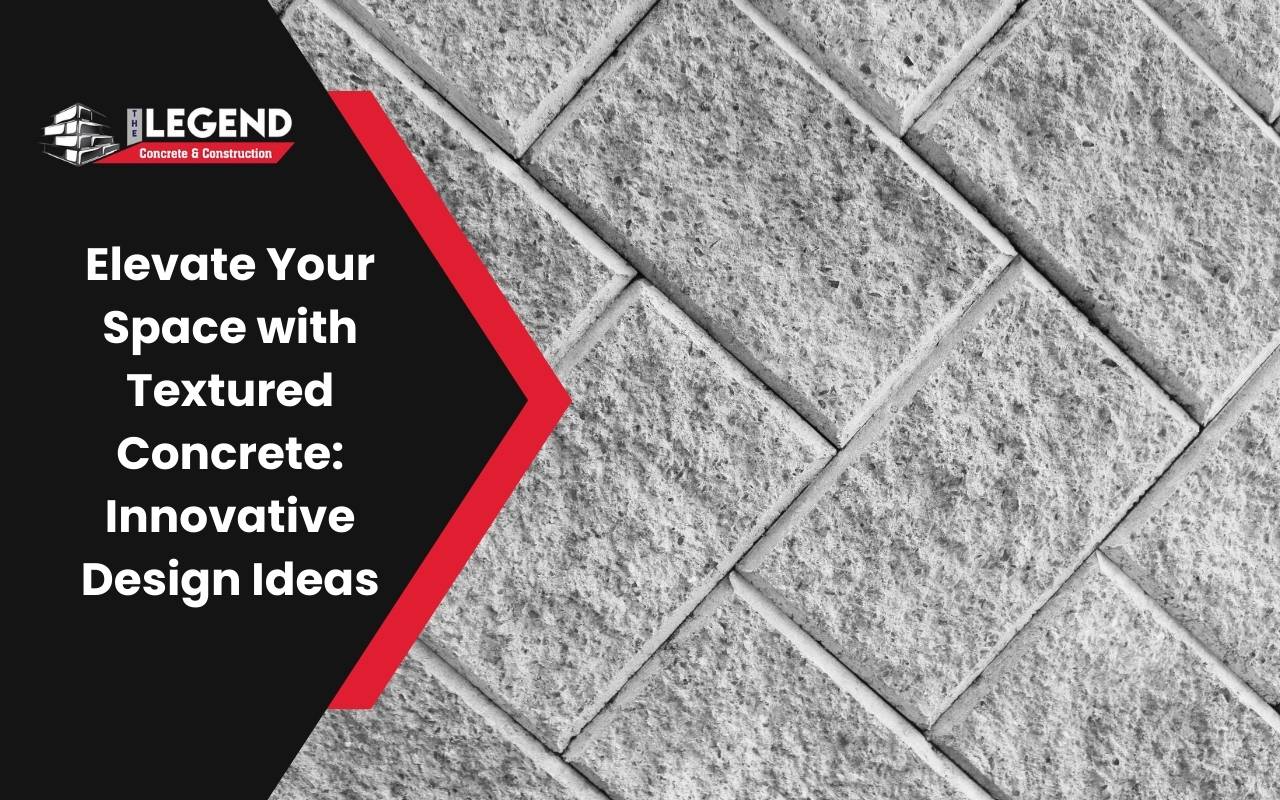
In a world where design trends evolve quickly, homeowners and architects seek unique touches to set their spaces apart. Therefore, enter textured concrete—a versatile material that is no longer just the backbone of modern architecture but also a stunning design element. From intricate wall patterns to floors that evoke natural stone, textured concrete reshapes how we view design. If you thought concrete was only gray and dull, it’s time to reconsider. Moreover, textured concrete offers durability and character for any space. Whether creating a minimalist haven or a bold industrial style, the options are endless.
For example, picture a living room where the fireplace wall, adorned with geometric designs, becomes a centerpiece. Or imagine a serene backyard where textured concrete paths meander through greenery. As a result, these ideas showcase how this material transforms ordinary environments into extraordinary experiences. For professional guidance, visit our contact page.
Incorporating Textured Concrete in Interior Design
Textured concrete has transcended utilitarian origins to become central in modern interior design. With techniques like stamping, etching, and hand tooling, designers add depth and tactile interest. Additionally, homeowners use bold textures to create accent walls, while architects integrate exposed finishes for industrial appeal. In open living spaces, textured concrete floors tie kitchen, dining, and lounge zones seamlessly.
In addition, designers mimic natural materials like slate or wood grain without high maintenance. Pigments and sealers provide colors from soft grays to warm tones. Furthermore, pairing textured concrete with warm metals or soft furnishings creates striking contrasts. Whatever your aesthetic, this material adapts, providing a flexible canvas for bold decisions.
Creating Striking Wall Features with Textured Concrete
Walls gain new life with textured concrete. Specifically, techniques like board-formed patterns or relief carving produce three-dimensional surfaces. Moreover, lighting enhances shadows, adding drama and depth. From abstract motifs to linear striations, textured concrete walls are durable, low-maintenance, and artistic alternatives to paint or wallpaper. To explore more, learn how textured elements can elevate your project with our construction services.
Innovative Flooring Ideas Using Textured Concrete
- Broom Finish: Creates subtle ridges for traction, ideal for outdoor areas.
- Exposed Aggregate: Showcases embedded stones and pebbles, thus adding beauty and slip resistance.
- Stenciled Floors: Incorporates patterns and designs into concrete, therefore adding custom style.
- Trowel Texturing: Creates swirls and patterns, offering artisanal appeal.
- Radiant Heating: Enhances comfort and warmth under textured concrete surfaces.
Textured Concrete Countertops: A Modern Twist
Kitchen countertops benefit from the durability of textured concrete. In fact, these surfaces resist scratches, heat, and stains while offering handcrafted looks. Furthermore, custom molds or carvings create unique edges and patterns. Sealing protects surfaces and highlights pigments. Over time, countertops develop patina, thereby underscoring their artisanal beauty. Consequently, for a modern kitchen upgrade, consider textured concrete counters that blend strength with style.
Enhancing Outdoor Spaces with Textured Concrete
Outdoor areas feel cohesive when textured concrete is used for patios, walkways, and pool surrounds. Stamping and staining mimic stone or wood, yet they avoid maintenance drawbacks. In addition, steps, seating, and retaining walls gain durability and slip resistance. By combining finishes, designers create layered textures that harmonize landscapes. With textured concrete, outdoor living becomes both functional and elegant.
Custom Furniture and Decor Pieces
Designers now craft furniture and décor from textured concrete. For instance, side tables, benches, and shelving add sculptural weight to rooms. Similarly, smaller pieces—vases, planters, candle holders—extend the theme. Moreover, by incorporating wood, glass, or metal, artisans achieve contrast and elegance. This versatility proves that textured concrete extends far beyond structural use.
Lighting Solutions to Complement Textured Concrete
Lighting highlights the character of textured concrete. Specifically, spotlights, recessed lights, or LED strips emphasize relief patterns. Warm white tones soften surfaces, creating cozy atmospheres. Additionally, layered lighting ensures textures shine from multiple angles. Outdoors, bollard lights cast dramatic shadows across paths, thereby enriching evening experiences.
Maintenance Tips for Textured Concrete
- First, sweep and vacuum regularly to prevent scratches.
- Then, wash gently with mild detergent to maintain finish.
- Avoid harsh chemicals that could damage textures.
- Additionally, re-seal every few years to preserve color and durability.
- Finally, address stains promptly for long-lasting beauty.
Sustainability Benefits of Textured Concrete
Textured concrete supports green building due to its longevity and thermal properties. Furthermore, it stabilizes temperatures, reducing energy use. By using recycled aggregates, builders lower carbon impact. In addition, low-VOC sealers ensure healthier air indoors. Therefore, choosing textured concrete reduces waste and supports sustainable practices while maintaining beauty and strength.
Frequently Asked Questions
What makes textured concrete a good choice for interiors?
It combines durability with customizable aesthetics; moreover, it fits diverse design styles effortlessly.
How do I maintain textured concrete surfaces?
Simply sweep regularly, clean gently, and reseal periodically for long-lasting finishes.
Can textured concrete be used outdoors in all climates?
Yes, with proper sealing and drainage, it withstands freeze-thaw cycles and sun exposure. Furthermore, it remains visually appealing year-round.
Is it possible to customize the color and pattern?
Absolutely. With pigments, stains, and custom molds, textured concrete adapts to any vision.
How does textured concrete contribute to sustainable design?
Its thermal mass reduces energy use, while recycled aggregates cut environmental impact.
Embracing the Versatility of Textured Concrete
Ultimately, textured concrete merges functionality with artistry, elevating interior and exterior spaces. Its robustness and adaptability make it ideal for modern projects. From accent walls to custom furnishings, this material harmonizes with any vision. Therefore, embrace textured concrete, and let its tones and patterns transform your space. For expert assistance, connect with us on our contact page.
